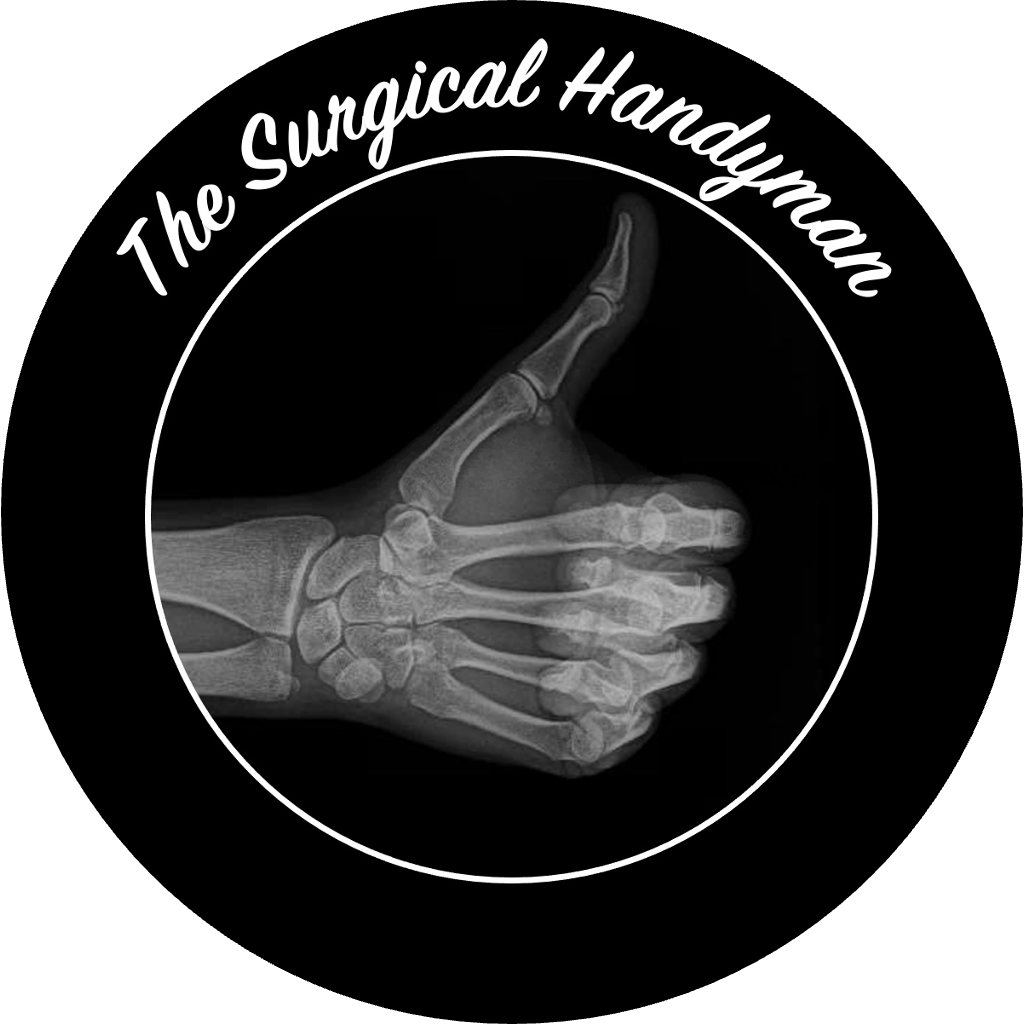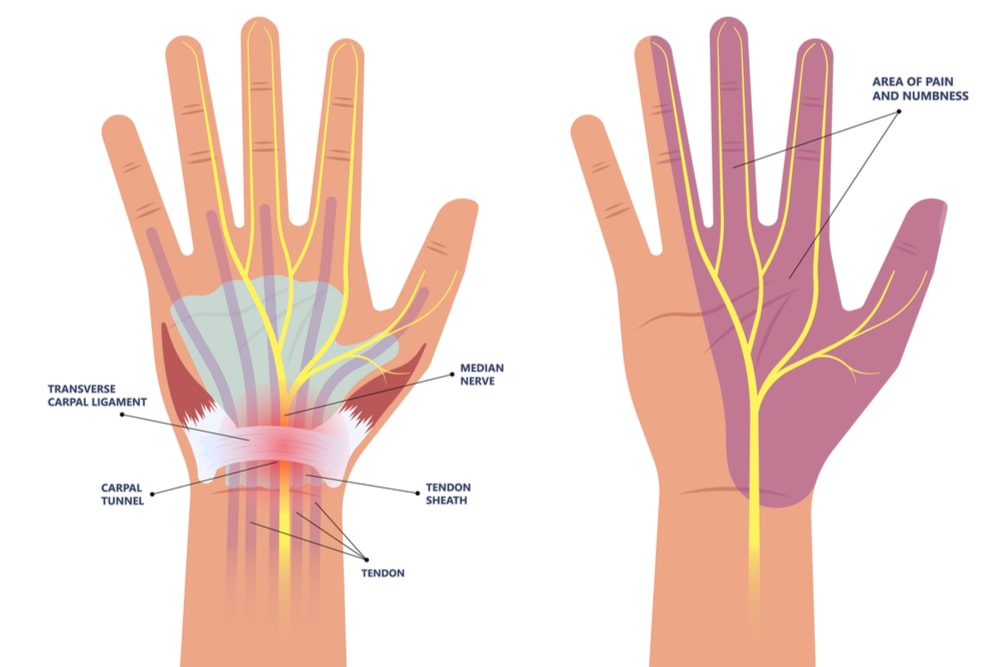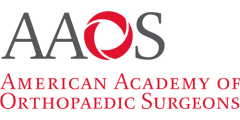Are you suffering from hand pain, numbness, tingling, swelling, stiffness, and/or weakness? Do these symptoms generally involve the thumb, index, middle, and ring fingers? If so, you may be suffering from carpal tunnel syndrome. Carpal Tunnel Syndrome is one of the most common conditions affecting the upper extremity, affecting approximately 3 to 6 percent of adults in the general population.
What is carpal tunnel syndrome (CTS)?
The carpal tunnel is a narrow passageway through the wrist bordered on three sides by a bony arch (the carpal bones) and covered by a thick band of connective tissue called the transverse carpal ligament. The transverse carpal ligament forms the roof of the carpal tunnel. There are nine tendons, in addition to the median nerve, that pass through this tunnel, and they can become compressed by the inflexible structures making up the carpal tunnel. The median nerve provides sensation to the thumb, index finger, middle finger, and a portion of the ring finger, as well as the signal to fire to the muscles at the base of the thumb (thenar muscles). Carpal tunnel syndrome (CTS) occurs when pressure builds up within the carpal tunnel, putting pressure on the nerve, disrupting the way the nerve functions. Because of this increased pressure, numbness, tingling, stiffness, weakness, and pain may be felt in the hand and fingers.
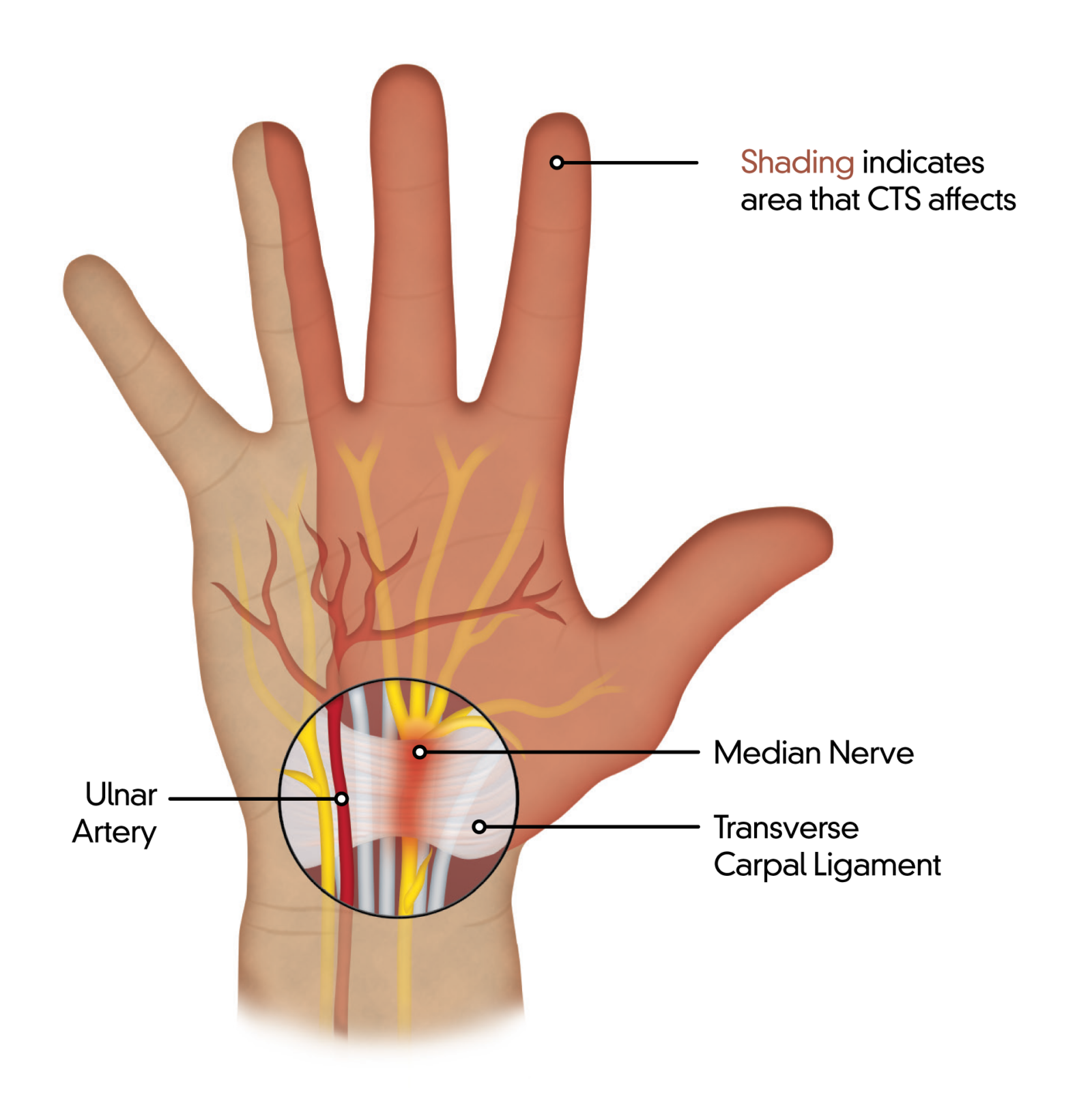
What causes carpal tunnel syndrome?
In most cases, the cause of carpal tunnel is unknown, however there are well defined contributing factors to the development of this disease. Any factor that increases the pressure on the median nerve within the carpal tunnel may lead to symptoms. Most commonly, these factors include:
- Heredity – Some people simply inherit a smaller carpal tunnel, and this trait is known to run in families.
- Hand use – Repetitive motions over a pronged period of time may aggravate tendons, leading to swelling, which places additional pressure on the median nerve. Forceful gripping, driving, and vibration can increase symptoms. Even activities as simple as reading a book or sleeping with the fingers and wrist flexed may contribute to symptoms.
- Female gender and advancing age.
- Medical conditions – Diabetes, arthritis, gout, thyroid gland imbalances, obesity, infections, tumors, ganglion cysts, alcohol addiction, and many other conditions are well known to be associated with CTS.
- Pregnancy – Hormonal changes during pregnancy can lead to fluid retention, limb swelling, and resulting CTS symptoms are common.
- Injuries – Wrist fractures, dislocations, and sprains
In most cases, symptoms are attributed to a multitude of contributing factors, and not one single well-defined cause.
Signs and Symptoms
Symptoms of carpal tunnel typically include pain, numbness, tingling, swelling, stiffness, and weakness, often in combination. Symptoms generally involve the thumb, index, middle, and ring fingers. Symptoms often occur inconsistently at first and vary in duration and severity throughout the day with activity and wrist position. Daily activities requiring grip may elicit symptoms, and patients frequently complain of hand numbness and tingling when reading a book, using a screwdriver, and while driving. Clumsiness with a tendency to drop objects such as drinking glasses may develop. As symptoms progress, they may be experienced to a greater extent at night, leading to awakening and inability to sleep. In severe cases, sensation may be permanently lost in the hand and the muscles at the base of the thumb atrophy (shrink or waste away), leading to progressive weakness with pinch and grip. In later stages, sensation and muscle loss may lead to the inability to perform even the simplest of tasks such as buttoning a shirt, tying shoes, or grasping a cane or walker.
Diagnosis
Carpal tunnel syndrome is a condition that worsens over time. The sooner the condition can be diagnosed and effectively treated, the better the outcome that can be expected. Generally, the diagnostic process begins with a review of medical history and discussion regarding the current symptoms. Prior injuries, how the hands are being used, timing and severity of symptoms, and contributing factors such as other medical conditions should all be discussed. Physical exam is critical and often clinically confirms the diagnosis during the initial evaluation. An x-ray of the wrist and hand may be obtained to evaluate for contributions from prior injuries or arthritis. Laboratory evaluation may be considered if an associated medical condition is suspected to be contributing to symptoms. Generally, definitive diagnosis is made with use of ultrasound (a painless and newer technique when appropriate) and electrodiagnostic studies (EMG – electromyogram and NCV – nerve conduction velocities). Additional conditions such as cubital tunnel syndrome (compression of the ulnar nerve at the elbow) and cervical radiculopathy are often suspected in conjunction with carpal tunnel syndrome, and these may be demonstrated with use of electrodiagnostic studies, further improving likelihood of successful treatment.
Treatment
Oftentimes, especially in early and mild cases of carpal tunnel syndrome, symptoms can be successfully treated conservatively, without surgery. Several conservative modalities may be considered, such as:
- Bracing or splinting – A brace or splint worn at night, maintaining the wrist in a neutral position, may relieve the symptoms that interfere with sleep and relieve pressure around the nerve.
- Nonsteroidal anti-inflammatory medications – Medications such as aspirin, ibuprofen, and naproxen may reduce pain and swelling.
- Activity modifications – CTS symptoms are often worsened by heavy gripping activities and repetitive use. If these activities can be decreased or modified, symptoms may be slowed, decreased in severity, or resolved completely.
- Steroid injections – Steroid injections deliver a strong anti-inflammatory medication (steroids) directly into the carpal tunnel. Injections often provide relief and are frequently used to alleviate symptoms and assist with confirmation of a diagnosis in complex presentations.
When symptoms do not improve with conservative management, or in severe cases where permanent, irreversible damage is possible with delay in management, surgery may be necessary. The goal of surgery for carpal tunnel syndrome is to release the transverse carpal ligament, alleviating compression on the median nerve. Several techniques exist for doing this, each with its own risks and benefits. Most commonly, a carpal tunnel release procedure will be performed in one of three ways:
- Open or mini-open carpal tunnel release
- Endoscopic, minimally invasive carpal tunnel release
- Ultrasound guided, minimally invasive carpal tunnel release
Depending upon technique chosen, the procedure may be performed in an office-based procedure room, outpatient surgery center, or hospital setting. Furthermore, the procedure may be done under general anesthesia, regional anesthesia, or local anesthesia. If surgery becomes necessary, all advantages and disadvantages will be discussed at length to ensure you are able to make the best possible decision for your specific situation.
While each of these techniques is effective at relieving the symptoms of carpal tunnel syndrome, variation does exist regarding recovery times, post-operative restrictions, and the severity of post-operative discomfort. These variations are largely due to differences in surgical technique, pre-operative severity of CTS, and other patient-specific medical comorbidities. It is important to note that soreness around incisions is expected to last for several weeks to months and numbness and tingling may disappear rapidly or slowly, often in relation to pre-operative severity of symptoms. Maximal recovery may take up to a year. In some cases, symptoms may never fully resolve, especially in severe cases. It is important to discuss the expectations for your specific situation with your surgeon pre-operatively.
Why consider Ultrasound-Guided, Minimally Invasive Carpal Tunnel Release?
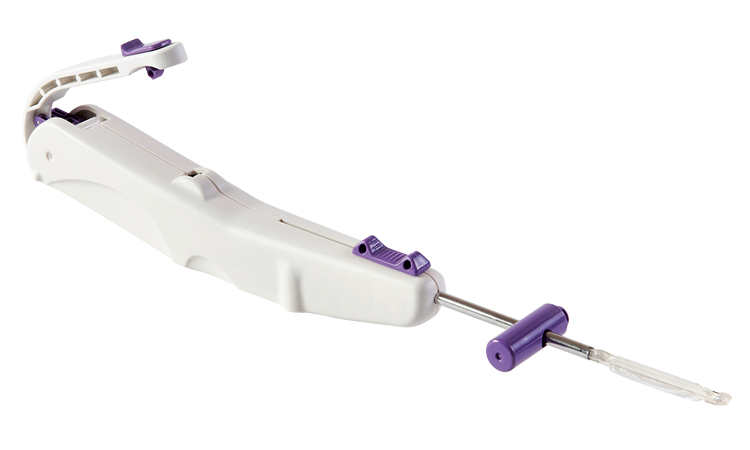
Performing carpal tunnel release (CTR) under the guidance of ultrasound was first documented in 1997. While CTR with ultrasound guidance is not new, the Sonex Health UltraGuideCTR is a new device first used in a CTR procedure in February 2017. UltraGuideCTR was developed to provide physicians with a simple, elegant, safe and effective tool to perform CTR, with or without ultrasound guidance. When UltraGuideCTR is used with ultrasound guidance, physicians are able to perform open CTR surgery in minutes, through a small, less disruptive incision while providing improved visualization of all critical anatomy in the wrist.
Important Benefits include:
- Most patients can return to work and the activities they love within 3-6 days
- Performed in a procedure room or office setting
- Typically performed using local anesthesia
- Small wrist incision usually closed without sutures
- Immediate motion in the hand for rapid recovery
- Postoperative therapy typically not required – saving time and money
- Reduces or eliminates need for opioids – most patients use Tylenol® or ibuprofen post procedure
Closing Thoughts
I’ve truly enjoyed creating this informational guide and sincerely hope that it has been of value and benefit to you. As a board certified, fellowship trained orthopaedic surgeon and hand specialist, I’ve dedicated my professional life to being at the absolute cutting edge of upper extremity diseases and management, with carpal tunnel syndrome being one of those conditions.
If you are personally suffering from symptoms of carpal tunnel syndrome, remember that it is a condition that gradually worsens over time, with risk for permanent loss of function in later stages. I strongly suggest that you seek evaluation with a competent hand surgeon, sooner rather than later. Carpal tunnel syndrome is easily treated with a variety of effective solutions. Advances in surgical techniques and devices in recent years have minimized the recovery times and post-operative pain, should surgery ever become necessary. If you wish to see me in clinic for evaluation, I will remain committed to providing every available option for management, and I am happy to assist you in the decision making process to find what’s right for you.


